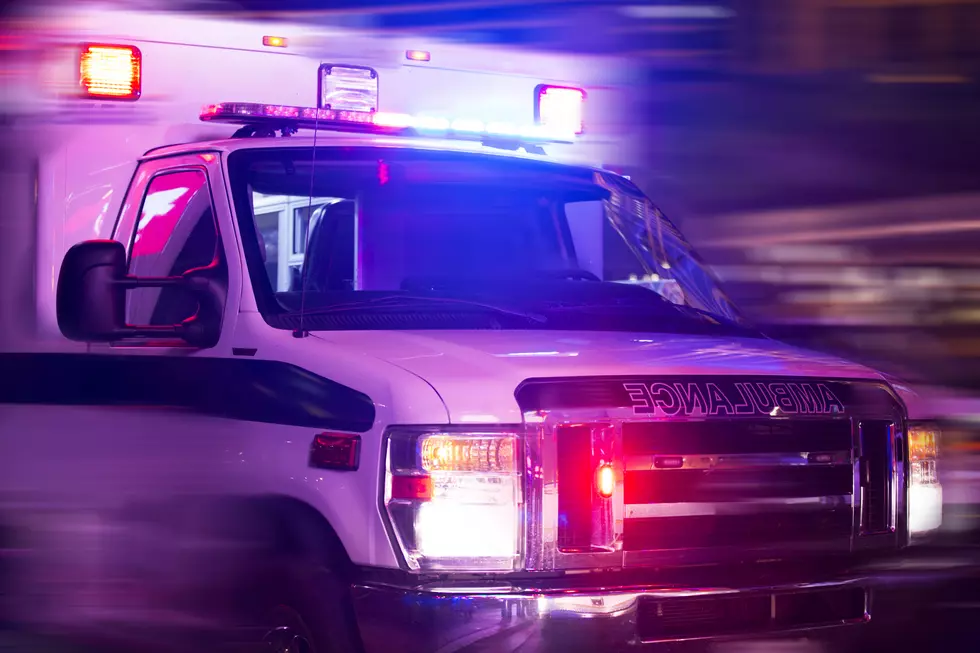
“Click It or Ticket” Enhanced Seatbelt Enforcement Campaign Starts Next Week
The Duluth Police Department, St. Louis County Sheriff’s Office, UMD Police Department, Minnesota State Patrol, Hermantown Police Department, Proctor Police Department and Floodwood Police Department are taking part in a statewide "Click It or Ticket" enhanced Seatbelt education and enforcement campaign May 20th – June 2nd.
With warmer temperatures coming and family vacations starting, road construction season, and plenty of distracted drivers out in full force it's an important time to be reminded of how serious the use of a seatbelt and the proper use of child safety seats are.
From the Duluth Police Department:
Nearly 41 percent of all motorists killed in traffic crashes on Minnesota roads during the last three years (2010-2012) were not buckled up, according to the Minnesota Department of Public Safety Office of Traffic Safety.
The Facts:
During the last three years, there were 864 motorist traffic deaths in Minnesota of which 352 were not buckled up. In an effort to reduce those statistics, a statewide Click It or Ticket seat belt education and enforcement campaign is running from May 20 – June 2.
Seat belts restrain motorists in the vehicle’s designed protective space, giving them room to live in the event of a crash. Seat belts also keep drivers correctly positioned behind the wheel to help maintain control of a vehicle.
The odds for injury in a crash are six-times greater if a motorist is not buckled up. An unbelted motorist can crash into a windshield and slam into and injure other passengers. Often, an unbelted motorist is ejected from the vehicle and killed when the vehicle rolls over them.
In Minnesota, law enforcement will stop and ticket motorists and unbelted passengers for belt violations. Drivers and all passengers must be buckled up or in the correct child restraint.
Belt up in the back — it’s the law. Only 35 percent of the backseat passengers killed in crashes were buckled up during the past three years.
Low seat belt use is one reason traffic crashes are the leading killer of Minnesota teenagers. In last three years (2010-2012) there were 103 teen motorists (13-19 years old) killed in traffic crashes — 46 (44 percent) of those killed were not buckled up, according to the Minnesota Department of Public Safety Office of Traffic Safety.
The Tips:
- Motorists should wear lap belts low and snug across the hips; shoulder straps should never be tucked under an arm or behind the back — not only is this unsafe, it is illegal.
- Children under age 13 should always ride in the back seat.
- Minnesota statute requires children under age 8 to ride in a federally approved car seat or booster, unless the child is 4 feet 9 inches or taller. In Minnesota, booster seats are required by law. Children should start riding in a booster upon outgrowing a forward-facing restraint. A child should remain in a booster until they are 4 feet 9 inches tall, or at least age 8. Boosters lift a child up so adult seat belts fit children properly.
- Pregnant women should wear the lap belt under the stomach, as low on the hips as possible and against the upper thighs. The shoulder belt should rest between the breasts.
- Airbags are designed to work with seat belts to keep vehicle occupants in a safe position during a crash — airbags are not effective when the motorist is unbelted.
Child Seats a Focus During Click It or Ticket
In Minnesota, three out of four child restraints are used incorrectly — meaning children are riding in the wrong restraint or it is not properly secured. Booster seats — required by law in Minnesota — are the most frequently unused restraint.
Booster-Age Children (4–7) Fatal and Injury Crash Facts, 2007–2011 in Minnesota:
- Of 11 killed, only three (27 percent) were properly restrained.
- Of 2,120 injured, only 918 (43 percent) were properly restrained.
- Of 5,847 who were properly restrained and involved in a crash, 84 percent were not injured.
Minnesota statute requires children under age 8 to ride in a federally approved car seat or booster, unless the child is 4 feet 9 inches or taller. Here are the restraint steps a child should progress through as they age and grow:
- Rear-facing infant seats — Newborns to at least 1 year and 20 pounds; recommended up to age 2. It is safest to keep a child rear-facing as long as possible.
- Forward-facing toddler seats — Age 2 until around age 4. It’s preferable to keep children in a harnessed restraint as long as possible.
- Booster seats — Use once outgrown a forward-facing harnessed restraint; safest to remain in a booster until 4 feet 9 inches tall, or at least age 8.
- Seat belts — A child is ready for an adult seat belt when they can sit with their back against the vehicle seat, knees bent comfortably and completely over the vehicle seat edge without slouching, and feet touching the floor. Children 4 feet 9 inches tall or taller can correctly fit in a lap/shoulder belt.
Seat belt education is a component of the state’s Toward Zero Deaths (TZD) initiative. A primary vision of the TZD program is to create a safe driving culture in Minnesota in which motorists support a goal of zero road fatalities by practicing and promoting safe and smart driving behavior. TZD focuses on the application of four strategic areas to reduce crashes — education, enforcement, engineering and emergency trauma response.
(From a City of Duluth Press Release)
More From MIX 108
![Watch: Minnesota Driver Seriously Injured After They Got Out of Vehicle In Four Car Pile Up [VIDEO]](http://townsquare.media/site/164/files/2023/02/attachment-truck-edit.jpg?w=980&q=75)








